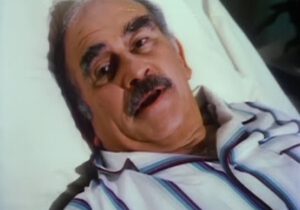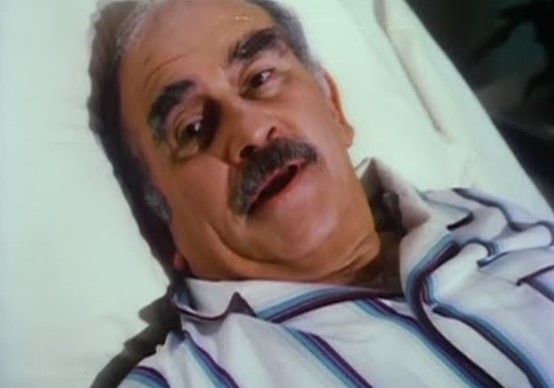Movie Info
Movie Info
- Director
- Richard Heffron
- Run Time
- 1 hour and 36 minutes
- Rating
- Not Rated
VP Content Ratings
- Violence
- 0/10
- Language
- 1/10
- Sex & Nudity
- 0/10
- Star Rating
Relevant Quotes
A cheerful heart is a good medicine, but a downcast spirit dries up the bones.

I came across this 1984 TV film on YouTube while searching for material for my workshop on The Gospel and Comedy. Based on Norman Cousin’s 1979 book Anatomy of an Illness as Perceived by the Patient, the screen adaptation was written by Lawrence Roman, and the film directed by Richard T. Heffron. In addition to the subject of mirth/laughter as related to health, I was drawn to the film by the actor portraying Cousins, Ed Asner.
Mr. Asner does not at all look like Cousins—something that at first cased the journalist to dislike the film at first—but he so sincerely throws himself into the role that you want to accept the film’s unusual message, one that confirms that of an author of the Book of Proverbs.
At the height of his successful career Norman Cousins falls prey to a crippling spinal cord disease with the tongue-twisting name of ankylosing spondylitis. There was no known cure, he was told that he had one chance in 500 of recovery. Thus, supported by his loyal wife Ellen (Millie Perkins), Cousins searches for his own cure. He also has the backing of his friend and Saturday Review writer Cleveland Amory (David Ogden Stiers)
At first his personal physician Dr. William Hitzig (Eli Wallach) was skeptical of Cousins’ proposed health program that consisted in massive doses of Vitamin C and hours of watching 16mm prints of comical TV shows and films, but eventually was persuaded to go along with his friend’s intentions. As a result, he was subjected to a lot of pressure from fellow doctors to drop out. We see this in a sequence in which Cousins watches comedies projected in his room, and when word spread around the hospital, other patients would gather outside Cousins’ room, some of them asking why they could have the same treatment. Under pressure from the hostile staff, Cousins leaves and moves to a hotel suite, where the management also is hostile because of the noise and congestion caused by the showing of films.
Eventually conquering the disease, Cousin gives great credit to Dr. Hitzig for loyally sticking by him. He does not tach that humor and its resulting laughter was the cure for his illness, but he does affirm that it contributed to his healing. He stated that “ten minutes of genuine belly laughter had an anesthetic effect and would give me at least two hours of pain-free sleep,”
The laugh therapy he championed has been practiced by many others since, including Dr. Patch Adams, as depicted in the film named after him, and which stars Robin Williams. In addition to Patch Adams, I urge you to watch the film about Patch Adams leading a group of clowns to Afghanistan, Clown in Kabul.
This review will be in the August issue of VP along with a set of questions for reflection and/or discussion. If you have found reviews on this site helpful, please consider purchasing a subscription or individual issue in The Store.
On YouTube and Tubi

